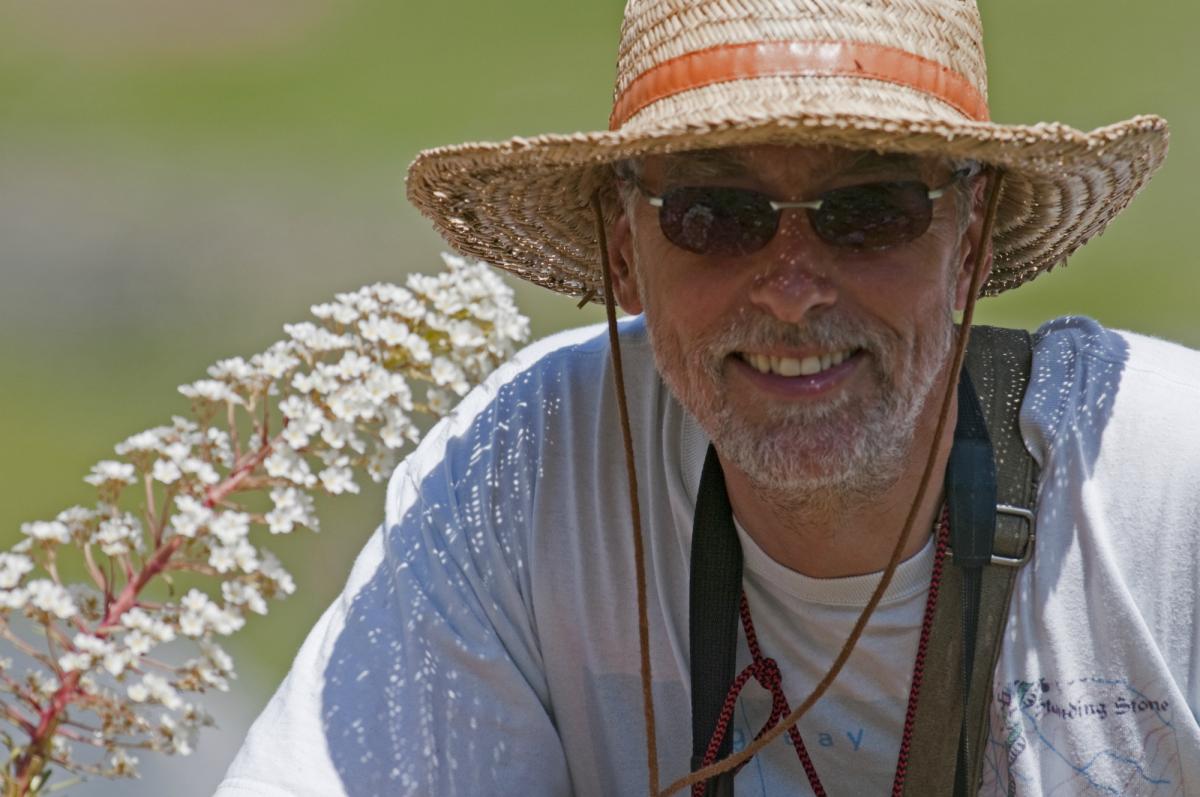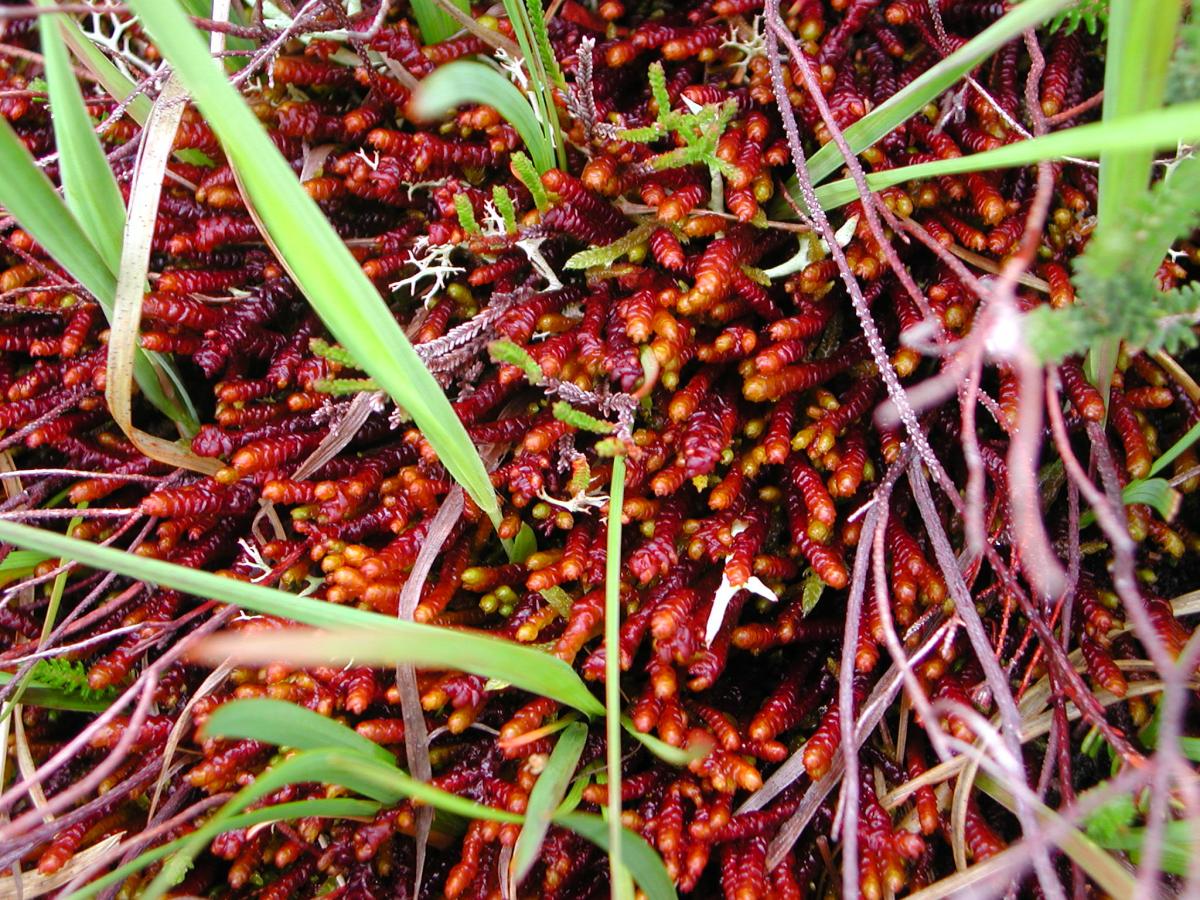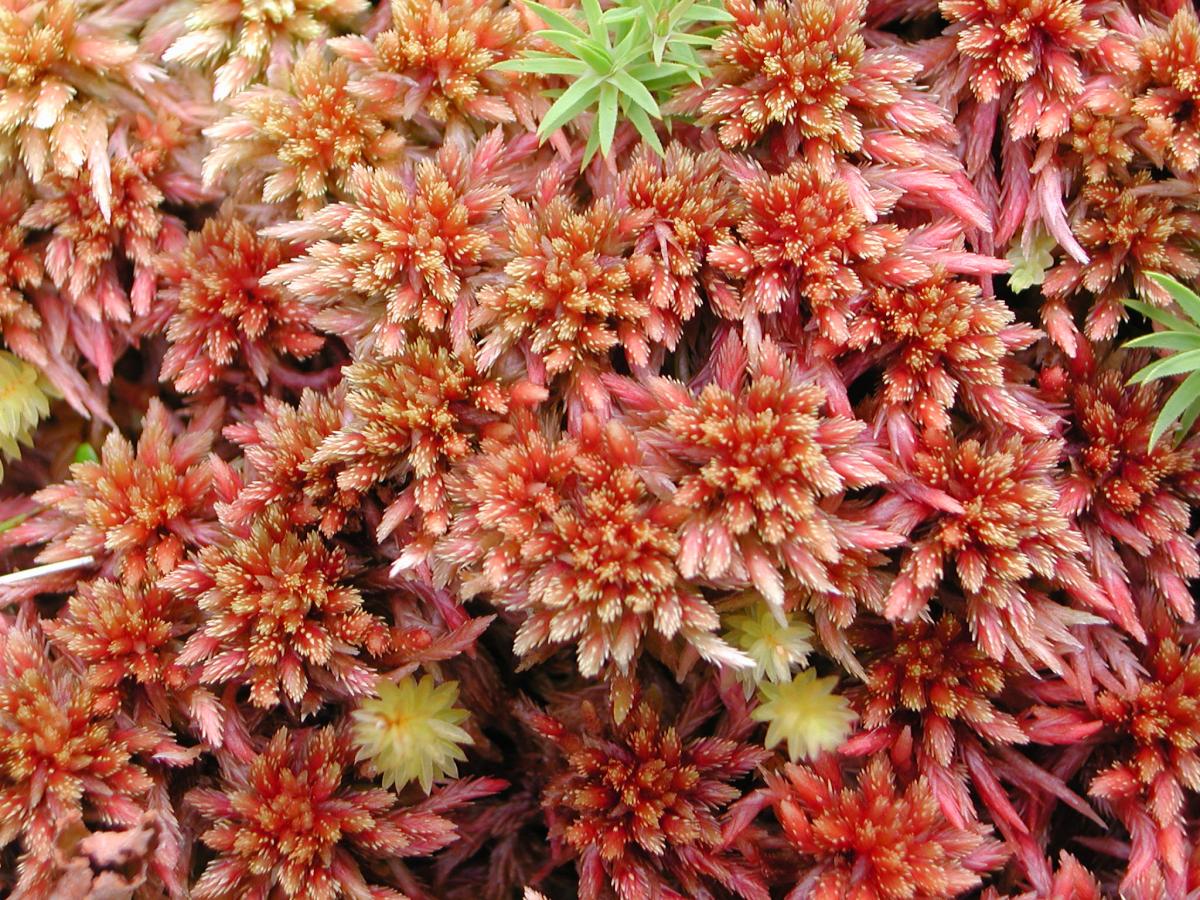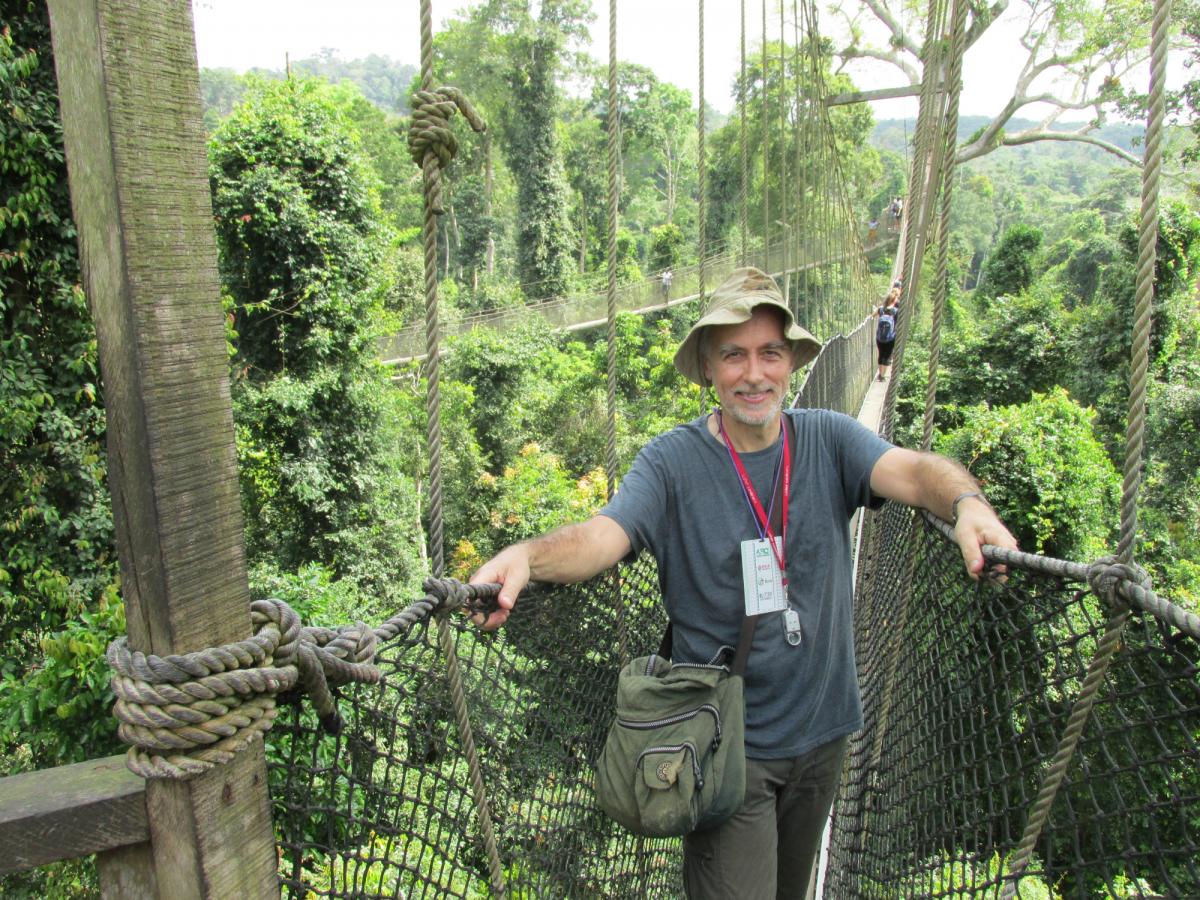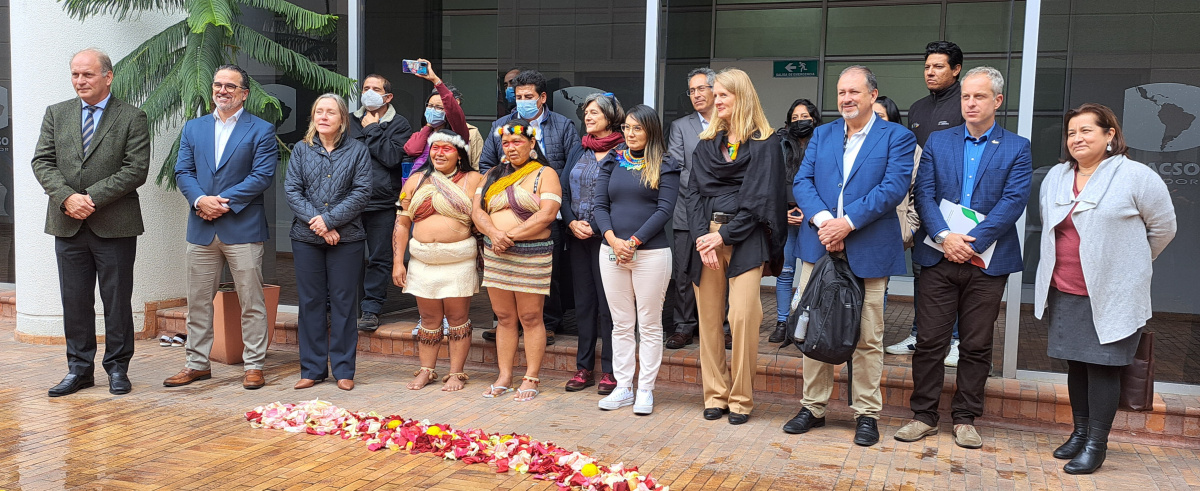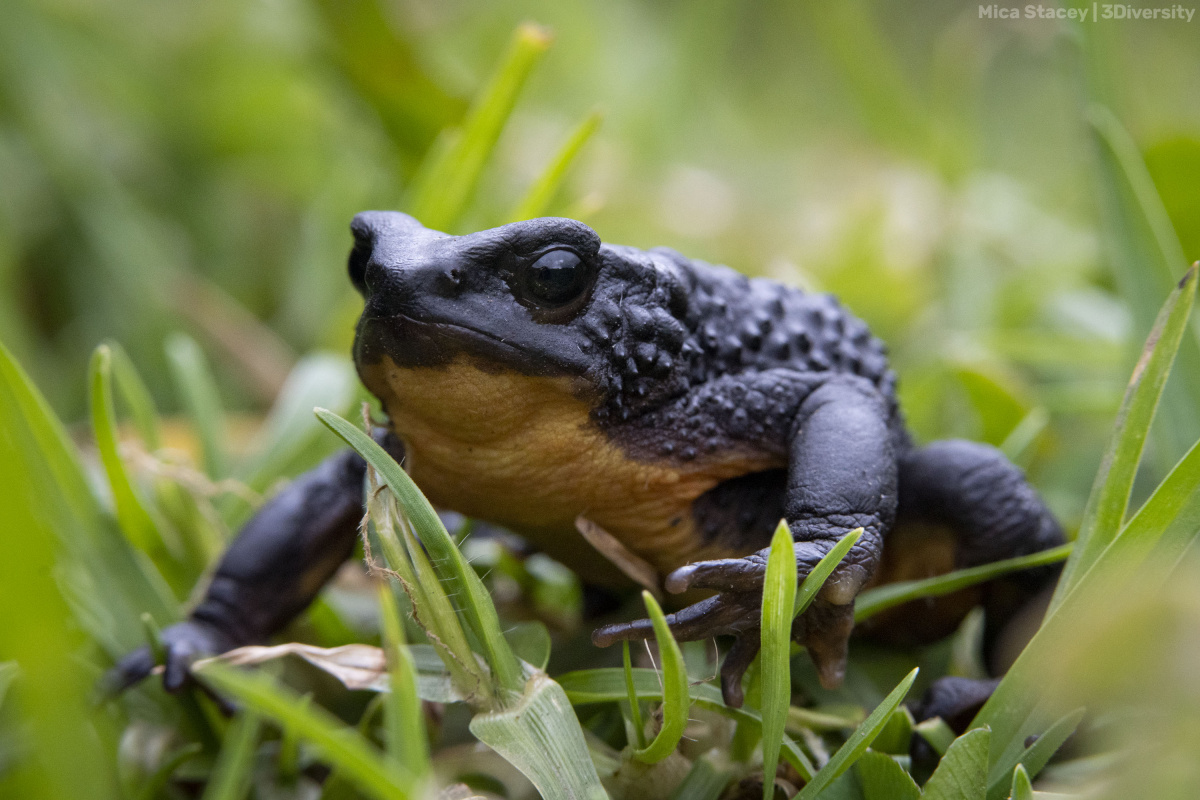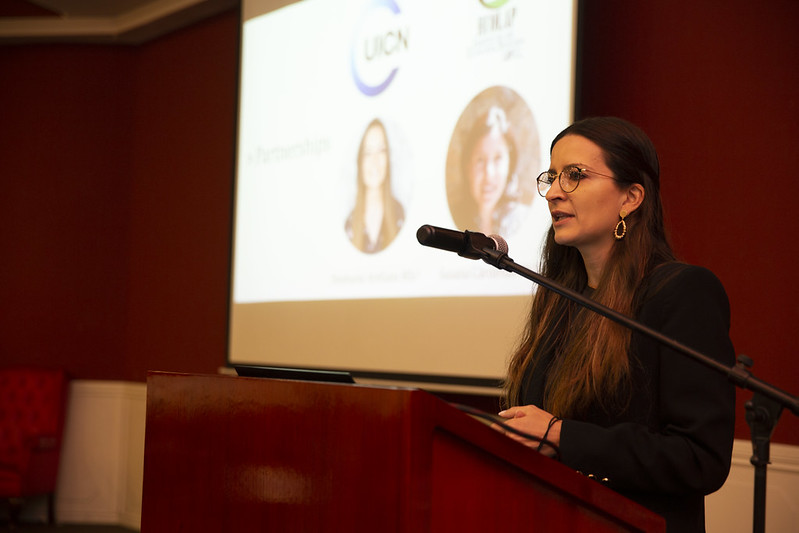Our Red List Species Assessors: A closer look at the prehistoric 'green stuff' at the bottom of trees, an interview with Nick Hodgetts
Bryophytes, which include liverworts, mosses and hornworts, are among the oldest terrestrial plants on Earth. They react to changes in their environment, such as air or water pollution, and are important for environmental monitoring of habitat and air quality. In this interview with Nick Hodgetts, a bryophyte expert based in Scotland, UK, he talks about his work and how he got involved with bryophyte research and conservation.
This is the sixth of a series of interviews with our Red List Species Assessors involved in IUCN’s European Red Lists LIFE project. Our interviewee is a bryophyte expert, but future interviews will profile beetle, mollusc, and other plant experts. The project aims to assess the extinction risk of these species groups, and will contribute to guiding policy decisions and conservation action at the European level. You can find previous interviews in the series here.
Nick Hodgetts became interested in natural history from a young age, thanks to his father, who used to take him birdwatching. This eventually led him to study for a degree in Zoology and Chemistry at the University of London, but his interest in plants made him change his mind. “I rapidly discovered that a subsidiary course in Botany was more to my taste, so I transferred to a Botany degree. After that, I did survey work for some of the British Wildlife Trusts, and I started to look at the fuzzy green stuff at the bottom of trees. That is when I realised that bryophytes were a thing. At about the same time I inherited a microscope from my grandfather, which was very helpful to see small bryophytes. Where I live, in the west of Scotland, bryophytes are a very significant part of the flora and I have been working with these plants ever since.”
Most people will be familiar with the appearance of green carpets of moss, but seen up close bryophytes are an incredibly diverse group of plants with important ecological functions. “I think there is something almost prehistoric about bryophytes. When you see them under a hand-lens or a microscope, there is a huge range of beauty. There are probably more than 10,000 species world-wide and they are very important in ecosystems - when they are a significant part of the biomass, they become a very important feature in holding water in the landscape, as well as being carbon sinks. Bryophytes also provide habitats for other organisms.”
Nick eventually became a lower plant specialist working for the British government’s conservation agency. “I worked there for about ten years, and at the end of that period I decided to become self-employed as a consultant botanist. I enjoy the balance between being out in the field looking at the mosses and being in the lab doing microscope work, as well as writing, going abroad to conferences and meeting like-minded people.”
Nick first became involved with red listing when working for the British government’s conservation agency, which was producing red lists for various taxonomic groups in Britain. “I got involved with British red listing for bryophytes, lichens and charophytes (freshwater green algae), and to some extent vascular plants. At about the same time I went to a conference in Sweden at which the European Committee for Conservation of Bryophytes (ECCB) was launched. Its main aim was to produce a European Red List, which I was deeply involved with until 1995.”
Nick is now the Chair of the ECCB, the largest network of bryophyte experts in Europe, and many of those experts are involved with the ongoing EU-funded LIFE European Red Lists project to assess the extinction risk of all European bryophytes. Nick is assessing a selection of species, and is also the Project Advisor. “It was fantastic to get involved with IUCN, because red listing is one of the main priorities for the ECCB. The species I am currently assessing occur in northwestern Europe. This is one of the better known parts of Europe and we have quite a lot of information and literature about the species – which is not necessarily the case in other parts of Europe.”
Through this IUCN project, the main threats to European bryophytes will also be determined. For example, habitat destruction and degradation, including pollution, keep coming up as threats to many species. “We are fairly privileged here in the west of Scotland, because the bryophytes are in quite good shape and there is still some good habitat around. However, in large parts of central Europe there has been a massive change over the last 100 years due to changes in agricultural practices and pollution from industry and vehicles. This has hit bryophytes hard.”
According to Nick, these red list assessments give us a better understanding of the scale of the problem. “To produce a red list is to provide a very important tool for influencing and informing conservation on the ground. Promoting awareness is also extremely important, making bryophytes part of people’s perception of biodiversity and getting them into mainstream conservation efforts.”
Nick has also done some work with tropical bryophytes, and this interview was carried out shortly after one of his trips to Ghana in Africa. “It would be nice to interest more people in conservation about bryophytes in the tropics. They are probably even more threatened than those in temperate climates. There is very little research altogether and still a lot to find out.”
As for Nick’s favourite bryophyte species? “One of my favourite bryophytes is called Pleurozia purpurea - it is a very large purple liverwort which occurs frequently in the west of Scotland and a few other places in the extreme west of Europe, and also in western North America, Japan, Taiwan and the Himalayas. For years everyone thought it was a leafy liverwort, but then some molecular work was done and it turned out it is closer to the thallose liverworts – very peculiar.”
